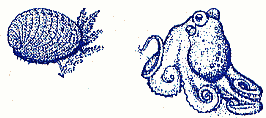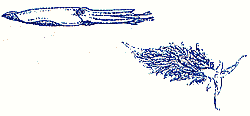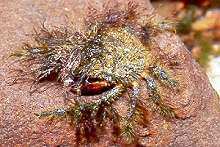
|
Have you ever stopped to considered how many types of living things there are on the earth? More importantly, have you ever taken the time to think about which parts of the earth support the most life?
At first it may appear that more species live on land than in the sea but that may be partly because the land has been much more intensively studied and partly because life on land is more familiar to us.
As a result, it may appear that biodiversity on land is greater than that in the sea. However, this can be misleading when we are thinking about the diversity of body designs that exist between living things.
Often biodiversity is considered to be the total number of different species found in an environment. Biodiversity can also mean the number of groups of living things represented in an environment. Each of these groups is distinguished by having major differences in the way their bodies are organised. These major groups of living things are called phyla by biologists. |
All organisms within a phylum share common features that distinguish them from other groups. A good example of a phylum is the phylum Chordata. In this phylum are all of the animals that have a distinct nerve cord along their body at some stage of their life. This group includes all of the vertebrates, including animals like dolphins, cod, pelicans, and turtles, as well as some very different looking animals, the sea-squirts, because of the nerve cord found in sea-squirt larvae.
The two thirds of our planet that is covered in the oceans and seas supports 28 out of the 33 recognised animal phyla compared with only 11 animal phyla found on the land and 14 found in freshwater. Biodiversity at this level is therefore greatest in the sea.
All of the animal phyla that are found on land, except one, have some examples of their group in the sea. In contrast, in the marine environment there are thirteen phyla which are exclusively marine.
Several more phyla are nearly exclusively marine, with a few freshwater species, including sponges (Porifera), stinging animals including anemones, corals and sea jellies (Cnidaria), and lace corals (Ectoprocta or Bryozoa). These include the sea stars, urchins, sea cucumbers and their relatives (Echinodermata), comb jellies (Ctenophora), and the once numerous lamp shells (Brachiopoda).
|
A number of phyla have become extremely successful in the marine environment with incredible divergence from the basic body plan. A clear example of this is in the phylum Mollusca, the soft-bodied molluscs.
Within this group are found animals as different in appearance as bivalves such as clams and scallops, snails like periwinkles, whelks, and abalone, and the incredible suckers, the cephalopods including the octopus, squid and sea cuttles (cuttlefish).
|


Diversity in molluscs
|
|

Decorator Crab
|
The crustaceans, in the phylum Crustacea, are also incredibly numerous and diverse in the sea. They range in size from the planktonic copepods and krill, through to the giant king crabs found in the depths on the continental slope.
Both molluscs and crustaceans have evolved over time to allow them to also survive in terrestrial and freshwater environments. |
|